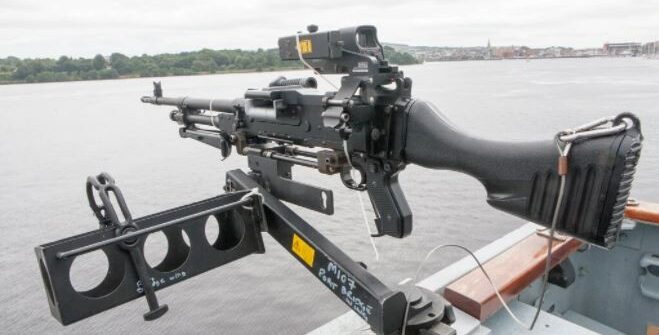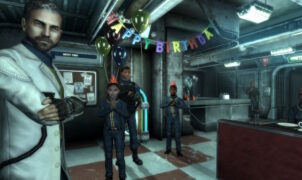TECH NEWS – Israeli intelligence agents had wanted to kill Iran’s top nuclear scientist for years. Then they figured out how to do it remotely, without agents. Such like a home office project.
Iran’s top nuclear physicist woke up an hour before dawn, as he does most days. He and his wife left their holiday home on the Caspian coast and drove to their country house in Absard, east of Tehran. Convinced that Mohsen Fakhrizadeh was leading Iran’s nuclear bomb efforts, Israel had wanted him dead for at least 14 years. Iranian intelligence had warned Fakhrizadeh of a possible assassination attempt, but the professor ignored it. So, shortly after noon on 27 November, he and his wife got behind the wheel of his black Nissan Teana sedan and set off.
An elusive target
Since 2004, when the Israeli government instructed its foreign intelligence agency, the Mossad, to prevent Iran from obtaining nuclear weapons, the agency has systematically picked off experts believed to be involved in Iran’s nuclear weapons programme. But Fakhrizadeh remained elusive despite several assassination attempts. So they decided to try something new. Iranian agents working for the Mossad parked a Nissan Zamyad van on the side of the road connecting Absard to the main road. A 7.62 mm sniper rifle was hidden under the truck’s tarpaulin. Around 1 pm, the assassination team received a signal that Fakhrizadeh, his wife and a group of armed guards were heading to Absard in an escort truck. The assassin, who was a trained sniper, took his position. However, he was nowhere near Absard. He was looking at a computer screen in an undisclosed location more than 1,000 miles away.
Reports of the murder
Reports from Iran have been confusing, contradictory and mostly wrong. While one reported a group of bombers, another said a truck had exploded. A few days later, several Iranian news agencies reported that the bomber was a killer robot. The Iranians mocked the story, only this time the perpetrator was a robot. The New York Times first published an almost science fiction-like article about what happened, featuring US, Israeli and Iranian officials, including two intelligence officers, and a collection of statements to the media by the physicist’s family. This reveals that the operation was the debut test of a high-tech computerised sniper robot equipped with artificial intelligence and multi-camera eyes, operated via satellite and capable of firing 600 shots per minute.
Time was running out
Preparations for the assassination began in late 2019 and early 2020 between Israeli officials, led by Mossad Director Jozsi Cohen, and senior US officials, including President Donald Trump, Secretary of State Mike Pompeo and CIA Director Gina Haspel. Israel paused its campaign of sabotage and assassination in 2012 when the US began negotiations with Iran leading to the 2015 nuclear deal. Now that Trump has denounced this agreement, the Israelis have wanted to relaunch the campaign. At the end of February 2020, Cohen presented the US with a list of possible operations, including the killing of Fakhrizadeh. According to an official at the meeting, US officials supported the assassination plot briefing in Washington. Iran’s relatively soft response to the January 2020
US assassination of Iranian military commander Qassim Suleiman encouraged both countries were encouraged. By the summer, it appeared that Trump could lose the US election. His likely successor Joe Biden has promised to reverse Trump’s policies and return to the 2015 agreement. If Israel wanted to assassinate a senior Iranian official, which could have triggered a war, it needed the US’s consent and protection. That meant they had to act before Biden could take office.
Programming the hit
According to an intelligence official familiar with the plan, Israel has chosen a special model of a Belgian-made FN MAG machine gun linked to an advanced robotic device. But the machine gun, robot, parts and accessories together weigh about a ton. So the equipment was dismantled and smuggled into the country piece by piece, then secretly reassembled in Iran. The robot was built to fit into the bed of the Zamyad pickup truck.
Multi-view cameras were mounted on the truck to give the command centre the complete picture possible. The truck was also packed with bombs so that it could be blown to pieces after the assassination. Artificial intelligence was programmed to compensate for the delay, the truck’s bumpiness and the speed of the scientist’s car. The other challenge was to establish that Fakhrizadeh was in the car. So they set up a decoy car with a camera to force the vehicle to turn around, getting a clear view of the target.
The assassination
Shortly before 15:30, the convoy arrived at the bend. Fakhrizadeh’s car almost came to a halt, enough to identify him. The machine gun fired one burst. It is not clear whether these shots hit Fakhrizadeh or just the car’s engine, but in any case, the vehicle swerved and stopped. The shooter adjusted his aim and fired another volley, smashing the windscreen at least three times and Fakhrizadeh’s shoulder at least once. The scientist got out of the car and crouched behind the open front door. According to Iran’s Fars News, three more bullets entered his spine, causing him to collapse immediately.
The attack was precise, and Fakhrizadeh’s wife escaped unharmed. Afterwards, the Zamyad truck exploded as intended, leaving no one to piece together what had happened. However, much of the robotic equipment remained largely intact. The Iranian Revolutionary Guard’s assessment that the attack was carried out by remote control using an artificial intelligence machine gun “equipped with an intelligent satellite link” proved correct. The operation lasted less than a minute, during which a total of fifteen shots were fired at the target. The weapon now joins the arsenal of high-tech weapons capable of remote targeted killing and may well foreshadow the future of warfare.
Source: The New York Times



















Leave a Reply